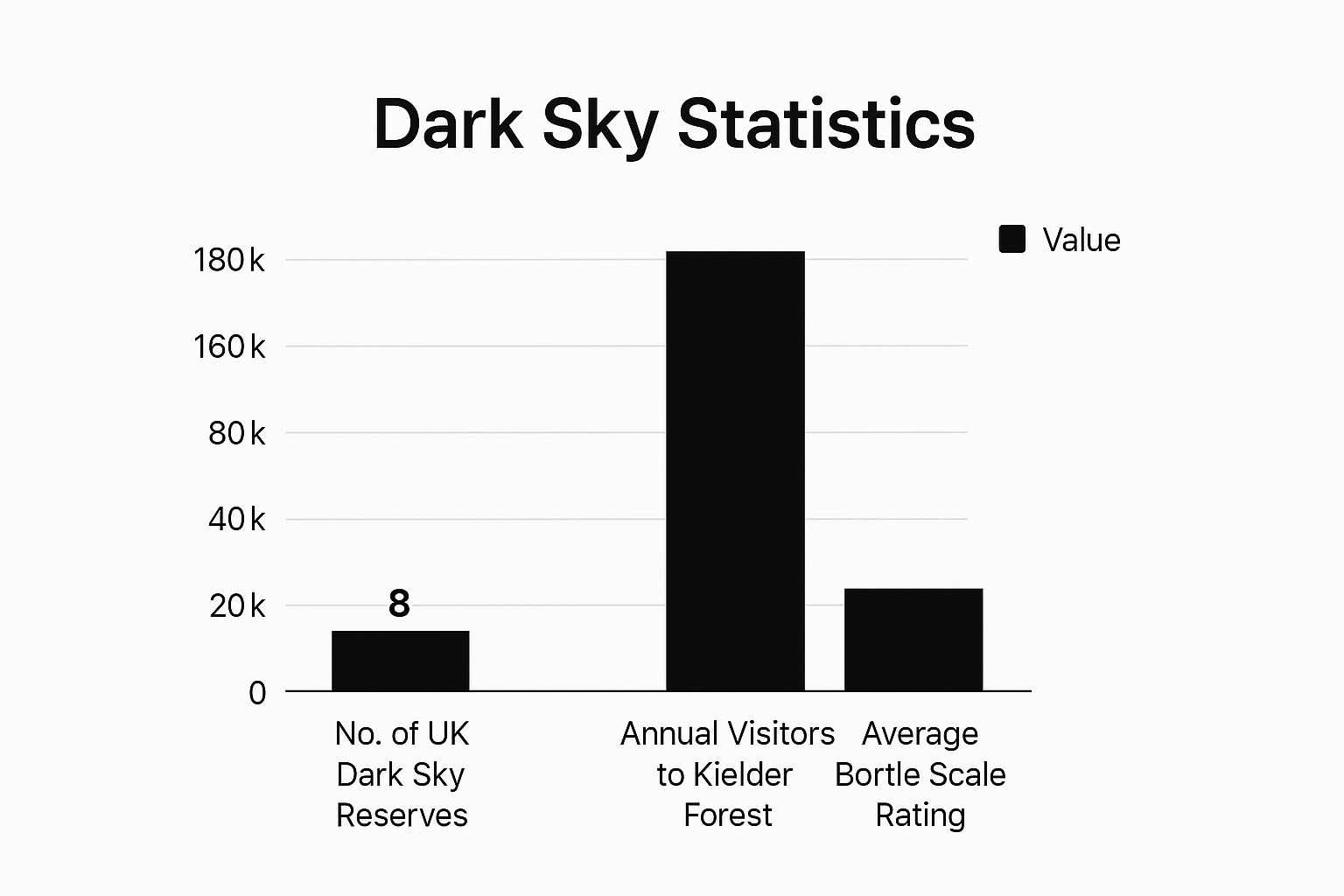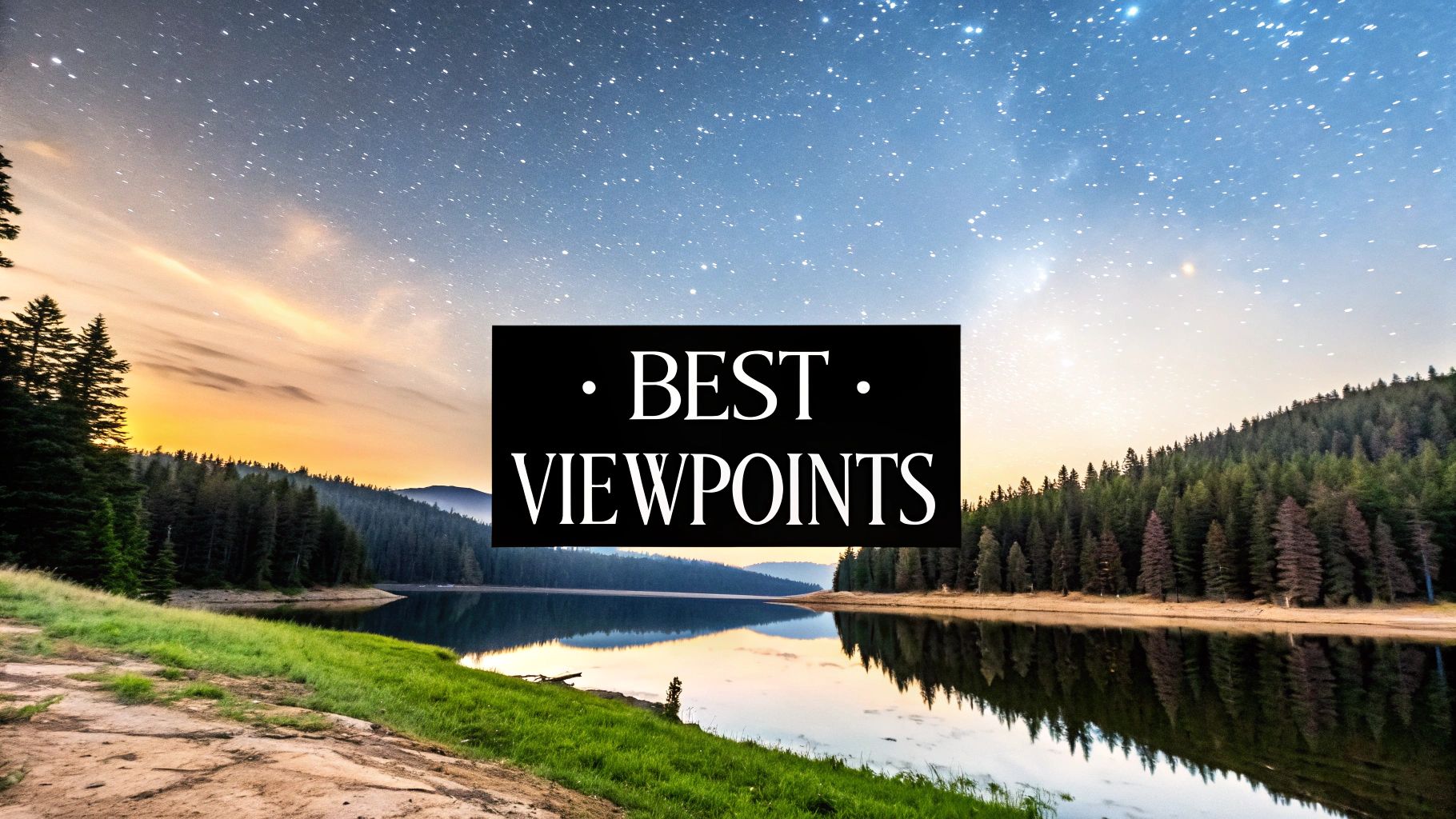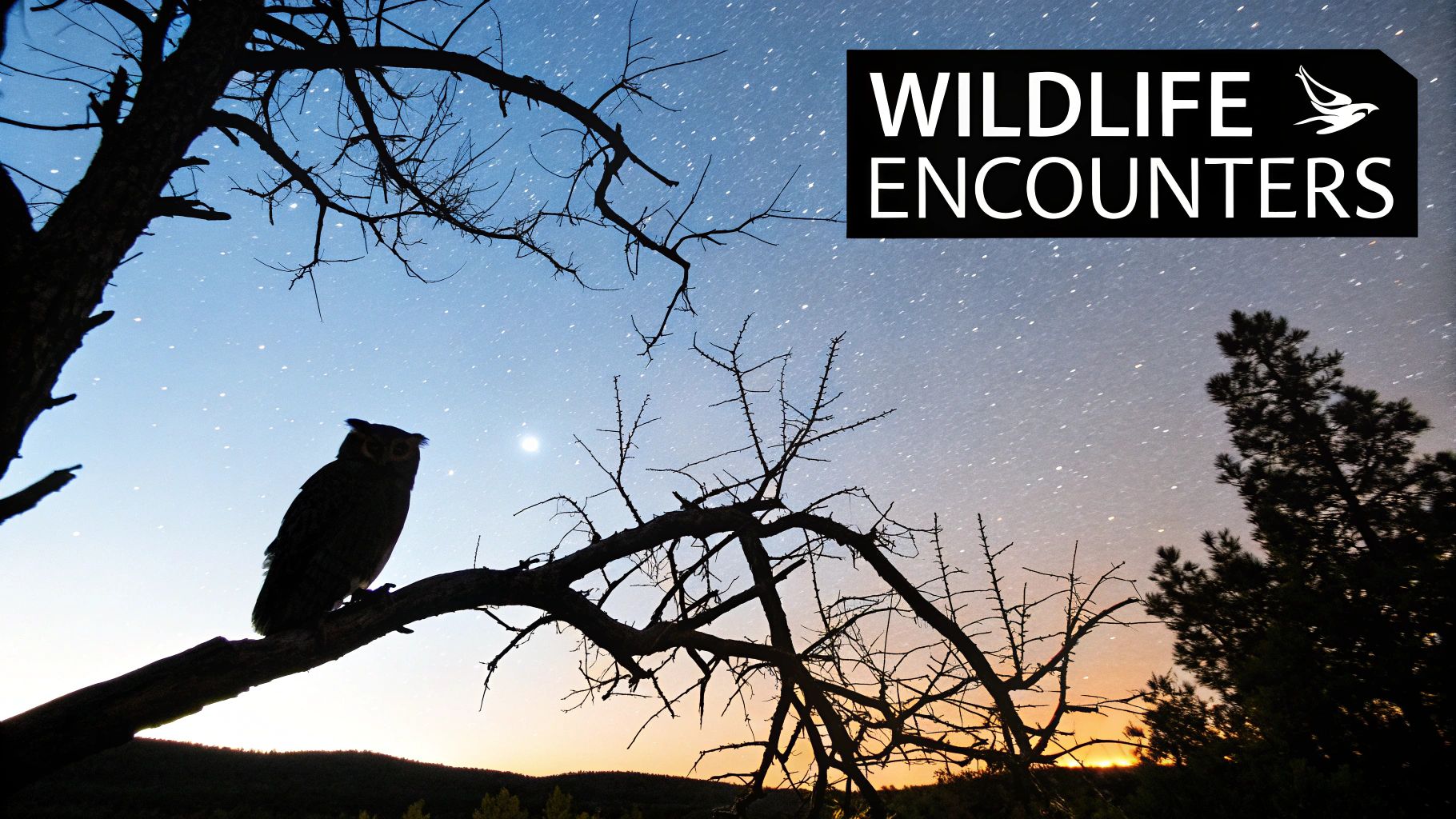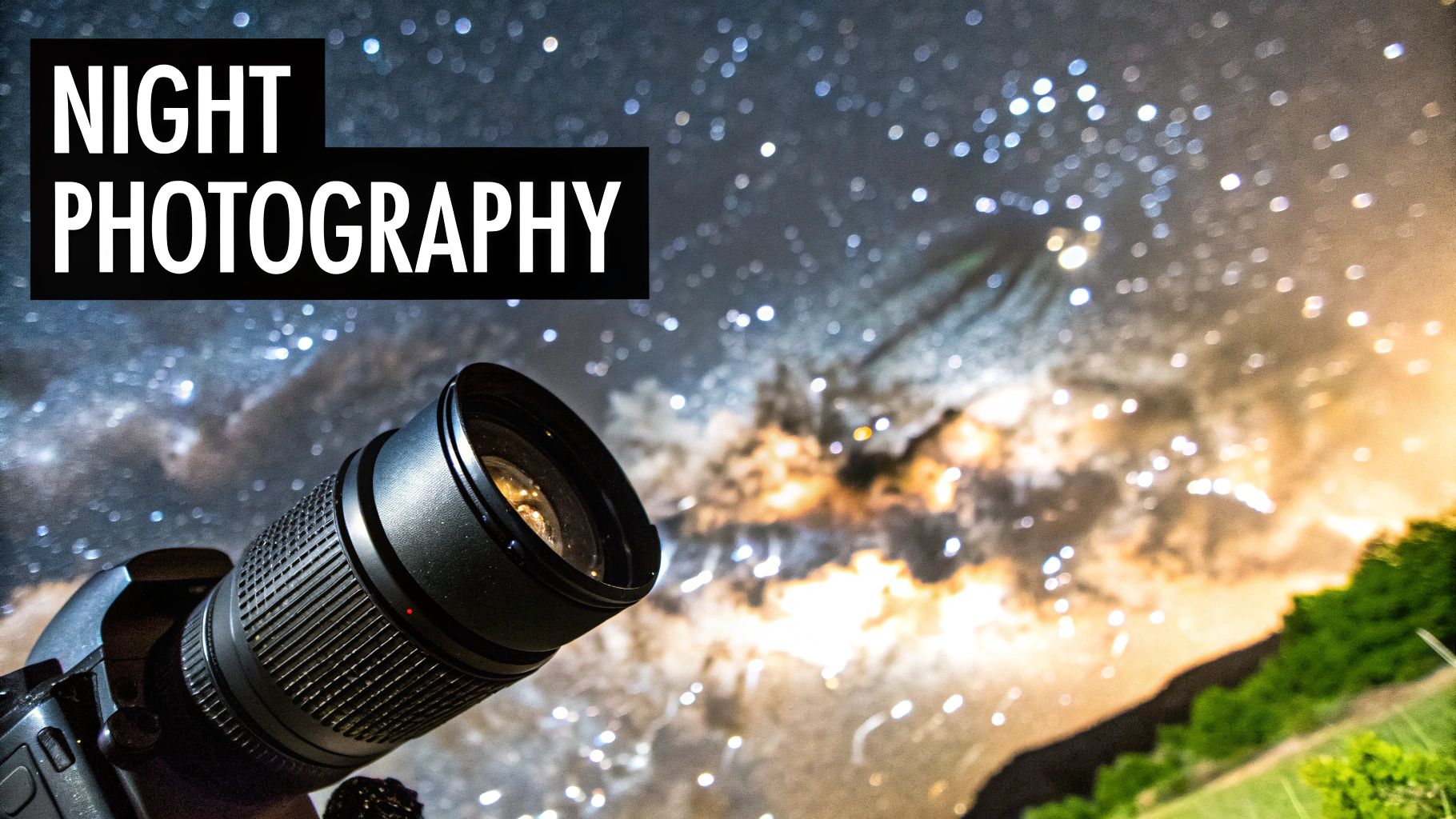Your Guide to Kielder Dark Skies Stargazing
- Brendon Hayward
- Jul 9
- 14 min read
Picture a place so dark and so quiet that the Milky Way isn't just a faint smudge in the sky, but a brilliant, shimmering river of light stretching from one horizon to the other. This isn't a far-flung dream; it's the nightly reality in Kielder dark skies, making this corner of Northumberland one of the most magical places in Europe to simply look up.
What Makes Kielder Dark Skies So Special?
The magic of Kielder isn't an accident. It's a carefully protected natural wonder. While cities and towns are flooded with artificial light that washes out all but the brightest stars, Kielder offers a pristine, black canvas. It’s not just about seeing more stars—it's about experiencing the night sky as our ancestors did, in all its profound, humbling glory.
So, what’s the secret recipe for this astronomical perfection? It starts with geography. Kielder sits right in the heart of the Northumberland International Dark Sky Park, a vast protected area covering almost 1,500 square kilometres up near the Scottish border. Its remoteness is its greatest strength.
This huge expanse of forest and moorland is home to only around 2,200 people, which means there's virtually no light pollution to spoil the view. On the Bortle Scale—a way of measuring sky darkness from 1 (perfectly dark) to 9 (inner-city sky)—Kielder regularly scores a Class 2. This is an exceptional rating that puts it among the very darkest skies in the UK, revealing breathtaking views of distant galaxies and nebulae with just the naked eye.
How Kielder's Darkness Compares
To really grasp what a Class 2 sky means, it helps to see how it stacks up against other environments.
Location Type | Bortle Scale Rating | What You Can Typically See |
|---|---|---|
Kielder Forest Park | Class 2 | The Milky Way is highly detailed, along with nebulae and faint galaxies. |
Rural Suburb | Class 4 | The Milky Way is just visible as a faint glow, major constellations are clear. |
Bright Suburb | Class 6 | Only the brightest constellations and planets are visible. The Milky Way is lost. |
City Centre | Class 8/9 | You can only see the Moon, planets, and a handful of the very brightest stars. |
Essentially, the difference between looking up from a city and looking up from Kielder is like listening to a single instrument versus hearing a full orchestra.
A Sanctuary from Light Pollution
Think of light pollution as a constant background hum that drowns out a quiet conversation. In most towns, this "noise" is so loud you can only hear the "shouts" of the Moon and a few bright planets. Here in Kielder, the silence is so profound you can hear the celestial whispers of thousands of stars, passing satellites, and the ghostly glow of the Andromeda Galaxy. This protected status is a promise to keep it that way.

This commitment to preserving the darkness, even as visitor numbers grow, is what makes the experience so consistently spectacular.
More Than Just a Dark Place
While the darkness is the main event, the whole Kielder experience is what truly sets it apart. It’s the combination of those pristine skies with the wild, rugged beauty of Northumberland National Park that creates such a powerful atmosphere.
By day, you can explore ancient forests, walk alongside the vast reservoir, and feel the anticipation build for the cosmic show that starts after sunset. If you're planning a trip, why not explore some of the unmissable walks in Kielder to really connect with the landscape that guards these precious dark skies. It's this unique blend of earth and sky that makes a visit here so unforgettable.
A Journey Through the Kielder Observatory

Right at the very heart of the Kielder dark skies phenomenon is the Kielder Observatory. This isn't just a building with telescopes; it's a place that turns a simple night of stargazing into a genuine cosmic adventure. Perched on a remote hillside, the unique, timber-clad building feels like a true gateway to the universe, designed to be welcoming for absolute beginners and seasoned astronomers alike.
The observatory was born from a powerful idea: to share the wonder of Northumberland’s incredible night sky with everyone. Its journey from a bold concept to a world-class centre for public astronomy has been nothing short of stellar. Since opening its doors on 25 April 2008, it's become a beacon for science and tourism in the North East.
From welcoming 1,200 visitors in its first year to nearly 20,000 by 2014, its popularity speaks for itself. It continues to grow, too, with recent additions like an advanced astroimaging academy and a powerful radio antenna. You can read more about its impressive story on its Wikipedia page.
Events for Everyone Under the Stars
One of the observatory's greatest strengths is its brilliant range of events, thoughtfully designed for every level of interest. You don’t need to know a thing about astronomy to be completely captivated here. The team of passionate astronomers and volunteers has a real knack for making complex ideas feel exciting and easy to grasp.
Their events calendar is always packed with fantastic options:
Family Astronomy Nights: These sessions are perfect for younger visitors, full of wonder and hands-on learning that can easily spark a lifelong interest in the cosmos.
Deep Sky Exploration: For those wanting to peer further into deep space, these events use the observatory's powerful telescopes to hunt for distant objects like galaxies and nebulae.
Aurora Nights: Timed for the best chance of a sighting, these nights dive into the science and sheer beauty of the Northern Lights—a true highlight of the Kielder dark skies experience.
Themed Evenings: From meteor showers to planetary alignments, special events are organised to celebrate spectacular celestial moments as they happen.
The real magic of the observatory is how it connects you directly with the cosmos. It’s the difference between seeing a photo of Saturn and actually witnessing its rings through a telescope with your own eyes. It’s a moment you’ll never forget.
An Essential Part of Your Trip
A visit here truly is an essential part of any trip to Northumberland. It provides context, wonder, and a much deeper appreciation for the darkness that the surrounding Northumberland National Park so carefully protects. Exploring the park's wild landscapes by day and its vast skies by night offers a complete picture of what makes this place so special.
Our Northumberland National Park guide is a great place to start planning the rest of your adventure.
One crucial tip: book your observatory event well in advance. They are incredibly popular and almost always sell out quickly. It’s an experience that truly elevates a visit, turning a dark night into an enlightening journey across the stars.
How to Plan Your Kielder Stargazing Adventure

So, you’re ready to witness the magic of the Kielder dark skies for yourself? Brilliant. A little bit of forward thinking can turn a good trip into an absolutely unforgettable one. If you take a moment to consider the timing, where you'll stay, and a few practical bits, you can simply relax and soak in the cosmic spectacle when you arrive.
First things first: when should you visit? While Kielder’s skies are a marvel all year round, the prime stargazing season is definitely between September and March. The nights are properly long and dark, and the crisp winter air often means clearer, sharper views of distant galaxies and nebulae.
Timing your visit with the moon is also a game-changer. A bright, full moon acts like a giant natural spotlight, washing out the fainter stars. For the deepest, darkest skies imaginable, you’ll want to aim for the New Moon phase, when our lunar neighbour is completely out of sight.
Choosing Your Base
Where you lay your head is a huge part of the whole experience. Kielder has a fantastic range of options, from rustic campsites right under the stars to cosy forest lodges that offer a warm retreat after a chilly night of sky-watching.
Think about the kind of trip you’re after. Is it a back-to-basics adventure or a comfy, restorative hideaway?
Campsites and Camping Pods: For a truly immersive trip, nothing beats staying at a campsite. You can literally step out of your tent and be surrounded by pure darkness.
Forest Lodges and Cabins: Places like Kielder Waterside have comfortable, self-catering lodges, which are perfect for families or groups wanting modern comforts close to the wild.
Local B&Bs and Inns: The nearby villages of Falstone and Bellingham are home to some wonderfully charming inns that offer a proper, warm Northumbrian welcome.
A stargazing trip is the perfect excuse for a proper break from the everyday rush. It’s about so much more than just seeing stars—it’s about finding a sense of stillness and reconnecting with the wild in a really profound way.
Finalising Your Logistics
Once you’ve got your dates and accommodation sorted, it’s time for the practicalities. The weather in Northumberland can turn on a sixpence, so checking the forecast is a must. A clear night is essential for good viewing, so keep an eye on cloud cover predictions from the Met Office or a good astronomy app.
It’s also a very good idea to check the schedule for the Kielder Observatory before you leave home. Their events are incredibly popular and often sell out months ahead, so booking tickets early is key. If you're looking to create a truly tranquil getaway, our guide on how to plan a peaceful retreat has some extra tips for finding that perfect sense of calm.
Finally, just a reminder that Kielder is properly remote. Mobile signal can be patchy at best, and shops are few and far between. Fill up the car with fuel before you enter the park and pack any snacks or supplies you might need. A little preparation goes a long way, ensuring your adventure is all about the stars, not stress.
A Seasonal Guide to the Kielder Night Sky

The sky above Kielder is a living, breathing masterpiece, never the same twice. Each season rolls in with its own cosmic display, turning the vast darkness into a familiar celestial map once you know what to look for. It’s the difference between just looking up and having your own personal tour of the universe.
Autumn, for many, is the prime time. As the nights draw in, you’re treated to one of the most mind-boggling sights: the Andromeda Galaxy. To the naked eye, it’s a faint, ghostly smudge. But grab a pair of binoculars, and that smudge resolves into the spiral arms of our closest major galactic neighbour. An entire galaxy, just hanging there in the sky.
Winter Wonders and Summer Jewels
As winter takes hold, the sky is dominated by its most famous resident: Orion the Hunter. His bright, three-star belt is unmistakable and serves as a fantastic signpost. Follow the belt downwards to find Sirius, the brightest star in our night sky, twinkling fiercely. Look above the belt, and you’ll spot the delicate, shimmering cluster of the Pleiades, often called the Seven Sisters.
Come summer, the warmer, shorter nights bring a whole new cast of characters. The brilliant Summer Triangle, formed by the stars Vega, Deneb, and Altair, hangs directly overhead. But the real star of the summer show is the Milky Way.
Under the truly dark skies of Kielder, the Milky Way isn't just a faint wisp. It’s a breathtaking river of light, thick with dust lanes and bright patches, arcing from horizon to horizon. It's a sight that genuinely makes you feel part of something immense.
The sky is a theatre for more than just stars and galaxies. Throughout the year, Kielder offers a front-row seat to some incredible celestial events. To help you plan your visit, here’s a quick guide to what you can expect to see in each season.
Seasonal Stargazing Highlights in Kielder
Season | Key Constellations | Special Events and Deep Sky Objects |
|---|---|---|
Autumn | Cassiopeia, Pegasus | Andromeda Galaxy (M31), Double Cluster in Perseus |
Winter | Orion, Taurus, Gemini | Orion Nebula (M42), Pleiades Cluster (M45), Geminids Meteor Shower (Dec) |
Spring | Leo, Ursa Major (The Plough) | Whirlpool Galaxy (M51), Leo Triplet of galaxies, Lyrids Meteor Shower (Apr) |
Summer | Cygnus, Lyra, Aquila | The Milky Way, Ring Nebula (M57), Perseids Meteor Shower (Aug) |
No matter when you visit, a quick check of a star chart or app will point you toward these seasonal treasures.
Catching a Fleeting Spectacle
Beyond the predictable constellations, Kielder is a superb place for catching more fleeting moments. Meteor showers, like the Perseids in August or the Geminids in December, can put on a stunning show, with dozens of 'shooting stars' an hour during their peak.
But the holy grail for many visitors is the Aurora Borealis, or Northern Lights. While they are famously elusive, your chances are best between October and March on long, dark nights. You'll need a clear view to the north and a recent burst of solar activity, but seeing the sky dance with green and purple light is an unforgettable reward.
Of course, any stargazing trip depends on clear skies. To get a feel for what to expect, have a look at our guide to Northumberland's weather patterns to help you plan for the best possible views.
What to Bring for a Night Under the Stars
A little bit of prep makes all the difference between a good night of stargazing and a truly magical one. Even on what feels like a warm summer evening, the temperatures at Kielder can plummet once the sun goes down, so dressing for the occasion is your first priority. Honestly, you can't have too many layers.
Think of it like building your own cosy cocoon. Start with a thermal base layer, add a good fleece or a woolly jumper, and top it all off with a windproof and waterproof jacket. Warm trousers are a must (jeans get cold and damp surprisingly fast), as are thick socks, sturdy walking boots, a hat, and gloves. It might feel like overkill when you're setting off, but you'll be glad of them. It’s far better to peel a layer off than to spend the night shivering.
Getting a Better View
Once you're warm and comfortable, you can turn your full attention to the main event. While your naked eyes are more than enough to see thousands of stars in a sky this dark, a little bit of gear can open up a whole new level of detail.
Binoculars: A simple pair of 10x50 binoculars is a brilliant starting point. They’re light, don't cost the earth, and are perfect for getting a closer look at the Moon's craters, spotting Jupiter’s four largest moons, or appreciating the sheer density of star clusters like the Pleiades.
Telescope: If you're getting serious, a Dobsonian telescope offers incredible views for the price. Just be aware they can be quite bulky, so don't feel you need one for your first visit. Many people have a fantastic time without one.
Stargazing Apps: Apps like Star Walk 2 or SkyView Lite are like having a planetarium in your pocket. Just point your phone at the sky, and they'll tell you exactly what you're looking at, from constellations and planets to the International Space Station gliding silently overhead.
The single most important piece of kit, though, is a red-light torch. Standard white light from a torch or your phone screen will completely ruin your night vision, and it can take up to 30 minutes for your eyes to fully readjust. A red light lets you see where you're going without bleaching out the stars.
Finally, a flask of something hot and a camping chair or a thick blanket to lie on will complete your setup. It's a small effort that lets you settle in, get comfortable, and simply soak up the breathtaking celestial show Kielder puts on every clear night. A huge reward for a little planning.
How Kielder Protects Its Precious Darkness
Kielder’s breathtakingly dark skies didn't happen by accident. They’re the result of real dedication and careful planning from a community that realised just how precious—and fragile—this natural resource is.
This isn’t just about a happy accident of geography. It's a story of active guardianship, shielding the night from the ever-present creep of light pollution. Think of it as environmental stewardship, but on a cosmic scale.
The entire Northumberland International Dark Sky Park, with Kielder right at its heart, follows strict lighting rules. These aren’t just gentle suggestions; they are core planning policies that shape any new building or development. The aim is simple: make sure any new light is absolutely minimal, aimed only where it’s needed, and fully shielded so it doesn't spill upwards and wash out the stars.
It’s a massive team effort between local authorities, businesses, and residents. Together, they’ve created a protective ‘buffer zone’ of darkness around the park's core, proving what’s possible when people work together to save something special for everyone.
Guarding the Galaxy Next Door
What’s truly remarkable is that Kielder has some of England’s darkest skies, despite being surprisingly close to major cities. The Tyneside conurbation, including Newcastle, is only about 35 miles away.
And yet, Kielder pulls off an incredible Bortle Scale rating of Class 2 (a genuinely dark sky), while a city like Manchester is a Class 9, where light pollution almost completely erases the night sky. The success here is a powerful testament to just how well these protective measures are working. You can see more data on how different areas stack up in these fascinating dark sky place findings.
By doing our own small part when we visit—like using red-light torches and switching off unneeded lights at our accommodation—we become part of this conservation story. Every little action helps make sure Kielder’s stars keep shining brightly for future generations.
This passion for preservation goes beyond the sky. The same efforts that protect the darkness also create a sanctuary for nocturnal animals. Looking after the night is a huge part of maintaining the region’s rich biodiversity. You can learn more about the amazing creatures that benefit by checking out the top spots to discover local wildlife in Northumberland.
Your Kielder Questions, Answered
Planning your first trip to a dark sky park can bring up a few questions. Don't worry, it's simpler than you might think. We've gathered some of the most common queries we hear from visitors to help you get ready for an unforgettable experience under the Kielder dark skies.
Do I Really Need a Telescope?
Not at all. In fact, this is probably the biggest myth about stargazing. The beauty of Kielder is that the skies are so incredibly dark that your own two eyes are all you need for a truly breathtaking show. On a clear, moonless night, you can easily see thousands of stars, the beautiful, hazy arc of our Milky Way, and even catch the odd meteor streaking past.
If you want to see a little more, a good pair of binoculars is a brilliant and affordable next step. They’re fantastic for exploring the Moon's craters or revealing that faint fuzzy patch is actually a glittering star cluster. A telescope is a wonderful bonus, but it's absolutely not a must-have for an amazing night.
Can You Genuinely See the Northern Lights Here?
Yes, you really can! Witnessing the Aurora Borealis from Kielder is a special experience, though it's never guaranteed. Your best chance is during the autumn and winter months – usually from October through to March – when the nights are at their longest and darkest.
For the magic to happen, you need a perfect storm of conditions: a crisp, clear night with no cloud, a good, unobstructed view to the northern horizon, and, most importantly, a recent burst of solar activity. It's worth keeping an eye on aurora forecast apps and websites, as they’ll give you a heads-up when the odds are in your favour.
The real joy of Kielder is how accessible it is. You don’t need to be an expert or own expensive kit. You just need to show up, look up, and let the universe put on a show. It’s a powerful reminder of our place in the cosmos.
Are There Good Stargazing Spots Besides the Observatory?
Absolutely. The whole of Kielder Water and Forest Park is a designated Dark Sky Park, which means you can find a brilliant viewing spot almost anywhere you go. To make things even easier, the park has several official Dark Sky Discovery Sites.
These are handpicked locations with easy access, solid ground for a blanket or tripod, and huge, open skies. Some of the most popular ones include:
Elf Kirk Viewpoint: Famous for its incredible panoramic vistas.
Bakethin Reservoir: Offers stunning reflections of the stars on a still night.
Kielder Skyspace: A unique art installation designed to frame the sky perfectly.
What if It’s Cloudy?
It’s the UK, so clouds are always a possibility! But a cloudy forecast doesn't have to spoil your trip. If you've booked an event at the Kielder Observatory, the team there is brilliant at switching to a fascinating indoor programme. You'll still get to enjoy expert talks, see the giant telescopes up close, and learn something new, whatever the weather.
Our best advice is to plan a few daytime adventures too. Explore the forest trails, cycle the Lakeside Way, or visit Kielder Castle. That way, you're guaranteed a fantastic trip, come rain or shine.
A visit to the Kielder dark skies is the perfect way to truly escape and reconnect with the wild. Here at Fell Farm Hideaway, our peaceful, secluded cabins provide the ideal base for your stargazing adventure, offering a cosy retreat after a night under the stars. Discover your serene getaway at https://www.fellfarmhideaway.com.
Comments